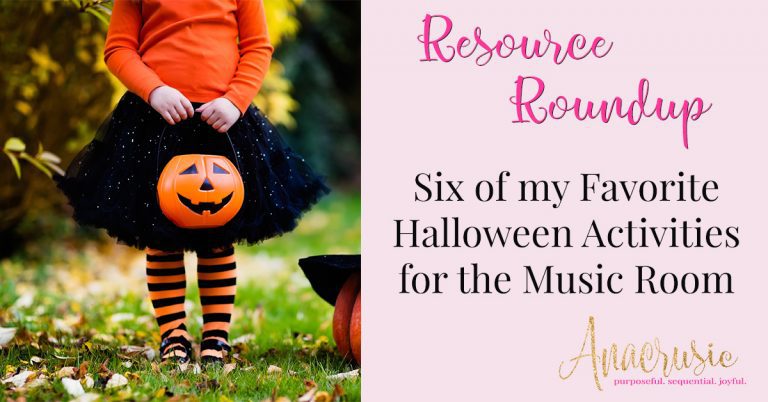You’ve already figured out what to teach in what order, and how to layer concepts overall in your elementary music classroom. You have the scope, you have the sequence, you have the whole big picture, the macro sequence if you will. But what about when it gets to the nitty gritty of that concept. Do you feel like you have your learning sequences figured out on the micro level? If you haven’t even allowed your brain to go there, or you don’t feel 100% solid on how to lead your students through exploring, discovering, and owning a musical concept in the elementary music room, then buckle up kids.
I used to be exactly the same way. I’d make sure I got to quarter notes and eighth notes before I ever used a tie. I’d sing songs with so and mi and add la later on. But I never knew how to get into those concepts in a way that promoted literacy and fluency. And I didn’t feel like my kids were being their most musical selves. Until I started actively using learning sequences.
A learning sequence is a series of purposeful steps that facilitates your students’ exploration, discovery, extension, sharing & reflection of any given musical concept.
If you feel like, I don’t know what you’re talking about Anne, I’ve got all these teaching things in the bag, 100%! Well… just give me a hot minute. I get it. I felt the same way. I had my order of concepts. I knew which rhythmic and melodic concepts I needed to teach. I knew how to sequence concepts overall to create a spiral curriculum. But I also felt stuck. I didn’t know how to teach concepts in a way that would allow my students the opportunity to speak the musical language before I asked them to read it.
I know you’ve probably got a scope and sequence and you most likely know what to teach in this grade and the next grade and beyond. But I challenge you to take it one step further. Focusing on how you sequence each individual concept not only gives your students the tools they need to have total and complete ownership over a concept, but it clarifies your teaching process too. Still not sure? Let me explain.
Committing to learning sequences gives your teaching direction & purpose.
There are about a million and one ways to teach each and every concept. One day you might use this song, another day you might use this activity, but if you’re haphazardly piecing together activities and throwing a penny and making a wish that the kids just “get it,” the intention isn’t there. Working through a learning sequence for each concept not only helps to identify what to teach when, but how to teach it and why.
Planning learning sequences makes choosing what to teach easy as pie.
I’ve said it once, I’ll probably say it a million times… When you purposely choose to include activities in your music classroom, you’re effectively choosing to exclude something. You probably only see your kids once, maybe twice a week. Time is of the essence, and we have a lot of concepts to teach. Implementing learning sequences for each and every concept takes the guess work out of what to teach, and streamlines the decision making process for what goes where. You know how you want to facilitate student learning, and therefore have a greater sense of what repertoire and activities will serve them well.
Creating learning sequences identifies how students will best discover concepts.
Since there are so many different ways to explore & discover musical concepts, taking the time to identify how your students in your teaching scenario might best experience an element is an essential component of using learning sequences. The flexibility to determine the best way to reach your learners at any particular time is one of my absolute favorite parts of this process. The structure provides the fluidity to adapt and differentiate learning for all of your students.
Facilitating learning sequences promotes student ownership and agency.
It’s as simple as this: the more students are prepared and given quality musical experiences by which to play on the front end, the more ownership and agency they have on the back end. By purposefully planning learning sequences that give students the opportunity to explore and discovery concepts by being their most musical selves, we enable them to build upon those experiences and increase music fluency.
Implementing learning sequences puts your mind at ease.
Maybe the best part about learning sequences is that once you have a system, it’s completely plug & play. You pick the intention, work through the process, and create purposeful, sequential, and joyful musical experiences for your kids.
What to snag the how-to guide for teaching anything and everything with learning sequences?? Click here to grab it fo’ free!!




You’re totally right! I believe whatever sequence you use, it needs to be intentional. With a plan, your teaching will be better, and your students will be more responsive. Thanks for writing this!
Thanks for these simple steps. They are so simple to think about as I plan my lessons for my students. I love it!